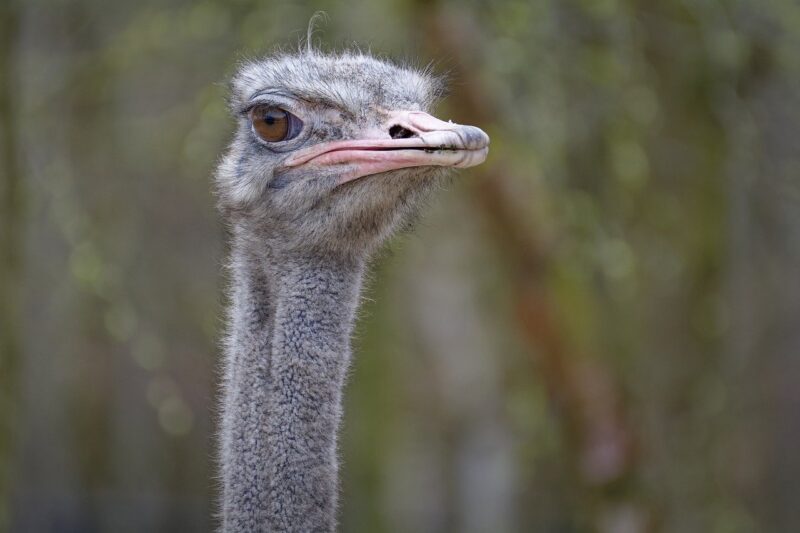How Zoos Use Technology to Track and Improve Animal Health
November 15, 2024

Zoos have long been integral to wildlife conservation and education efforts. They provide a sanctuary for endangered species, educate the public about wildlife, and support global conservation initiatives. However, as society grows increasingly aware of the wellbeing of animals, zoos are embracing technology to track and improve the health of these creatures. In this article, we will explore how advancements in technology are revolutionizing animal care in zoos around the world.
1. The Importance of Tracking Animal Health
Understanding the health of zoo animals is paramount for their overall wellbeing. Just like humans, animals can suffer from a variety of ailments. Monitoring their health is crucial not only for individual animal care but also for species conservation as a whole. Frequent health assessments help in:
- Early Disease Detection: By regularly tracking parameters such as weight, behavior, and dietary habits, zookeepers can quickly identify when an animal is unwell or behaving abnormally.
- Improving Breeding Programs: Understanding the health and genetic backgrounds of animals allows zoos to engage in informed breeding practices, which can help boost genetic diversity and enhance the species’ survival chances.
- Enrichment Activities: Monitoring an animal’s mental and physical health can provide insight into necessary environmental enrichment, which is essential for their stimulation and happiness.
For as long as animals have been in zoos, staff have used observation and medical check-ups to assess their health. But with the introduction of technology, the ability to monitor animal health has become more nuanced and precise.
2. Wearable Technology in Zoos
One of the most exciting advancements in animal care is the use of wearable technology. Much like fitness trackers for humans, these devices help zookeepers monitor animals in real-time. Wearable technology includes:
- GPS Collars: Used primarily for larger animals, GPS collars track an animal’s movement patterns and help ensure they are in good health. Abnormal movement can indicate discomfort or illness.
- Heart Rate Monitors: These monitors can track stress levels in animals, providing insights into their emotional health. Elevated heart rates during routine check-ups might indicate underlying issues that need addressing.
- Temperature Sensors: Some wearable technologies can monitor body temperature continuously, alerting zookeepers to potential fevers that could suggest infections.
The data collected from these devices is sent back to databases where it can be analyzed for patterns over time, providing an invaluable tool for veterinarians and animal care specialists.
3. Health Monitoring Systems
In addition to wearable devices, zoos have implemented sophisticated health monitoring systems. These systems utilize:
- Automated Feeding Systems: These ensure that animals receive the correct amount of food tailored to their dietary needs. Tracking food intake can help assess animal health and weight management.
- Behavioral Monitoring Software: Cameras and software can monitor animal behavior, helping identify abnormal activities that may signify health issues. For instance, if an animal is displaying lethargy, it may require further examination.
- Data Management Systems: Centralized databases allow different departments within a zoo to share information easily, from veterinary care to dietary needs. This approach paves the way for a more cohesive healthcare plan for each animal.
These systems represent a comprehensive approach to animal health, emphasizing prevention and early detection of potential issues.
4. Genetic Health Monitoring
Understanding the genetic makeup of animals is crucial for ensuring healthy breeding programs. Genetic monitoring utilizes:
- DNA Testing: Collecting biological samples and performing genetic tests allows zookeepers to understand hereditary health problems and foster genetic diversity.
- Pedigree Analysis: Zoologists can develop breeding plans based on genetic studies to avoid inbreeding and enhance species resilience against diseases.
- Genetic Risks Assessment: Identifying genes associated with certain health issues can allow zoos to make informed decisions about breeding, taking steps to ensure healthy offspring.
This genetic information, when combined with health monitoring technologies, fosters a comprehensive approach to improving not just individual animal health, but the overall health of populations in both captive and wild settings.
5. Telemedicine and Virtual Veterinary Services
Telemedicine is becoming increasingly prominent in veterinary care within zoos. With this technology, veterinarians can consult remotely, accessing:
- Real-Time Consultations: If an animal shows signs of distress, a vet can conduct a remote assessment and advise staff on how to proceed.
- Remote Imaging Technology: Tools such as advanced ultrasound devices can be used remotely to perform diagnostic evaluations without the need for an in-person consultation.
- Ongoing Training for Staff: Virtual training modules and video consultations can help zookeepers manage animal care more effectively, ensuring they’re up-to-date on the latest techniques in veterinary science.
In remote areas where expert veterinary care might not be available, telemedicine can provide an essential lifeline for animal health management.
6. Future Trends in Zoo Animal Health Technology
As technological innovation persists, the future of zoo animal health technology looks promising. Some potential trends include:
- AI and Machine Learning: These technologies can analyze vast amounts of data to predict health issues before they arise, ensuring timely intervention and treatment.
- Mobile Health Applications: Similar to health apps for humans, apps designed for animal health could allow zookeepers to track and monitor health metrics more efficiently.
- Increased Use of Robotics: Robotic systems could assist in monitoring and even treating animals in ways that reduce stress and enhance care.
These future trends promise to forge a stronger partnership between technology and wildlife conservation, creating healthier environments for the creatures in our care.
Conclusion
The integration of technology into zoo practices has transformed animal health management. From wearable devices that continually monitor vital signs to sophisticated health databases that inform care strategies, technology is enhancing the capability of zoos to care for their animals more effectively than ever before. This evolution not only leads to improved individual animal health but also advances the overall goals of wildlife conservation. As technology continues to advance, we can anticipate even greater breakthroughs that will benefit the animals we cherish and protect.
In embracing these technological solutions, zoos are not just enhancing animal welfare; they are pioneering new frontiers in conservation and education, ultimately leading to a deeper understanding of the needs of wildlife in our rapidly changing world.







